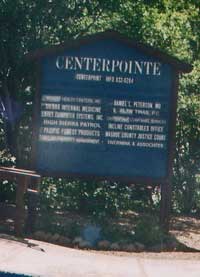 “The Month Of ME’ – in response to a challenge and in recognition of the important role the term myalgic encephalomyelitis (ME) has played and continues to play in this disorder, August, 2011 will be the ‘Month of ME’ on Phoenix Rising. We will examine ME’s role in this disorder throughout the month. All articles, blogs and posts produced by Phoenix Rising will only use the term myalgic encephalomyelitis or ‘ME’ unless ME/CFS or CFS is absolutely required. We encourage others to make this a “Month of ME” as well.
“The Month Of ME’ – in response to a challenge and in recognition of the important role the term myalgic encephalomyelitis (ME) has played and continues to play in this disorder, August, 2011 will be the ‘Month of ME’ on Phoenix Rising. We will examine ME’s role in this disorder throughout the month. All articles, blogs and posts produced by Phoenix Rising will only use the term myalgic encephalomyelitis or ‘ME’ unless ME/CFS or CFS is absolutely required. We encourage others to make this a “Month of ME” as well.
ME or myalgic encephalomyelitis has always been the preferred choice for many patients and patient support organizations particularly in the UK and Canada but the term ‘chronic fatigue syndrome’ or CFS or an iteration thereof has held sway for over 15 years both in the US and in the scientific community.
With the publication of the Canadian Consensus definition in 2003 and the introduction of the term ME/CFS, the term ‘ME’ began to return to visibility there. The IACFS’s name change to IACFS/ME and Rich Carson’s Fair Name Campaign sparked name changes in several U.S. organizations and the patient community largely embraced it. Now in the International Consensus Criteria, the CFS has been dropped and ‘ME’, standing by itself has, after over 20 years, been given new life in the research community.
But is it the same ME? The first major attempt to give the ME a coherent focus occurred in 1959 with Acheson’s long review journal article on ‘benign myalgic encephalomyelitis’ outbreaks. From that paper to the Incline Village outbreak in the mid 1980’s the focus was mostly on describing outbreaks but the publication of a definition for chronic fatigue syndrome in 1988 eventually lead to an almost complete focus on the non-epidemic forms of the illness.
The outbreaks continued on with Hyde stating in 2003 that he had reports of over sixty of them but they no longer figured in the literature and, despite the return of the name they were associated, they were not given any mention in the ICC. Some changes are surely expected. In this article we look at snapshots of ME over the years.
First comes Acheson’s review in 1959. Acheson looked at ‘ME’ second hand – using reports of outbreaks in the medical literature which varied in their level of detail. Then comes the Incline Village outbreak from 1984-1986 which was studied by physicians and researchers on the scene. Last comes the 2010 ICC definition derived from a consensus of 25 physicians/researchers who had diagnosed approximately 50,000 ME patients and had approximately 400 years of both clinical/teaching experience and hundreds of ME papers to their credit..
Has the changed focus from the outbreaks to the non-epidemic form of the disorder changed our conception of ME? And if so – how? First a look at how ME occurred in 1959.
 ME in 1959 – the Acheson Paper The Clinical Syndrome Variously Called Benign Myalgic Encephalomyelitis, Iceland Disease and Epidemic Neuromyasthenia E.D. Acheson, D.M., M.R.C.P.The American Journal of Medicine Vol. 26, Issue 4, Pages 569–595.
ME in 1959 – the Acheson Paper The Clinical Syndrome Variously Called Benign Myalgic Encephalomyelitis, Iceland Disease and Epidemic Neuromyasthenia E.D. Acheson, D.M., M.R.C.P.The American Journal of Medicine Vol. 26, Issue 4, Pages 569–595.
It’s important to note that Acheson himself reported that his description of the outbreaks was skewed by his focus on one subset of patients that stood out, and in doing so he highlighted a problem that has plagued physicians and researchers for decades – how to differentiate ME patients from the mass of other patients. Acheson’s statement is a bit puzzling as localized muscle paralysis generally affected about 40% of the patients and he describes outbreaks with low levels of paralysis but it indicates that he felt that many ME patients with less obvious symptoms were surely missed.
Broadly speaking, the epidemic cases have fallen into two groups: patients with definite localised muscular paresis, and those without. Only the former will be described in detail, as it is doubtful whether the latter could be distinguished from many other illnesses in the absence of an epidemic.
Very quickly in Acheson’s paper we can see some differences. Acheson’s summary of 14 ME outbreaks up until 1959 indicated that young adults of female gender were most at risk, that ME most often occurred in hospital or health care settings (“Most curious of all the epidemiologic features is the apparent susceptibility of the nursing medical and ancillary processions”) and that the disorder was seasonal with almost all outbreaks occurring from April to September. (Stating that the disorder affects more health care workers, teachers and students than other sectors of society, some 54 years and 46 outbreaks, later Hyde retained the health care focus in his 2003 description of ME in “The Complexities of Diagnosis” )
Acheson indicated that the following symptoms were most prominent in the ME outbreaks dating to 1959.;
- Signs of upper respiratory/gastrointestinal infection (nausea, sore throat, vomiting) but curiously low fever (given the degree of debility found ) that usually disappeared quickly.
- Severe, generalized headache
- Usually marked stiffness in the back or neck
- Muscle pain aggravated by exertion sometimes severe enough to that the touch of clothing on the skin could be painful.
- Muscle twitching
- • Localized muscular weakness/paralysis – eg being unable to move an arm or a leg. Acheson reports high variability in ‘local paralysis’ in the outbreaks with an average of about 40% displaying it. By 3 months it was cleared in about 90% of patients. –
- High emotional lability (weeping, irritability, anger), depression, etc. was ominipresent
- Short term memory loss, problems with concentration
- Poor sleep
- Plus others – a whole range of other symptom, of tinnitus, vertigo, inner ear deafness, over sensitivity to sound, involuntary eye movements, double vision…
Most people in the outbreaks did recover but a significant proportion remained ill -suffering from pain, fatigue and mood disturbances often triggered by exertion, cold weather or menstruation. Treatment options were limited with doctors, noting that exertion produced relapses, recommending rest and more rest.
ME in 1985 – the Incline Village Outbreak – the Jump-off Point for ME in the Modern Era
A Chronic Illness Characterized by Fatigue, Neurologic and Immunologic Disorders, and Active Human Herpesvirus Type 6 Infection Dedra Buchwald, MD; Paul R. Cheney, MD, PhD; Daniel L. Peterson, MD; Anthony Komaroff, et. al. Annals of Internal Medicine 15 January 1992; Vol 116 (2):103-13
Jump forward 35 years and several thousand miles westward where two physicians (Dr. Dan Peterson and Dr. Paul Cheney) in the Incline Village resort outside of Lake Tahoe in the US are being deluged with patients with a mysterious illness.
Similarities to Former ME Outbreaks– Most of the Incline Village cases had a sudden flu-like onset (@90%) and largely effected women. Fatigue or exhaustion, headaches, difficulty sleeping, difficulty concentrating, depression/anxiety and unusual mood changes, and nausea were present in over 50% of the victims.
Differences – The notable upper body pains and stiff necks strongly noted in the Acheson report didn’t appear in the Incline Village one. In contrast to the short term course of low grade fever in the ME outbreaks, about 50% of the Incline Village patients had long term low grade fever. Swollen lymph nodes and sore throats weren’t particularly common in the outbreaks but they were present in about 80% of the Incline Village patients. There was no seasonal component to the Incline Village outbreak and middle aged not young women were mostly effected.
Some of the more eye-catching neurological symptoms in the outbreaks (paralysis, muscle jerks, etc.) were relatively rare in the Incline Village with about 5% of patients demonstrating temporary paralysis. Contrast this with approximately 80% of victims displaying paralysis in the Los Angeles event and a general percentage of about 40% in the other outbreaks. (Some outbreaks had lower levels of paralysis; about 10% in Punta Gorda in 1955).
Was this the same disorder? It was close enough for the authors to open the discussion section of their paper with this paragraph
The illness we have observed shares many features with the entities variably called “postinfectious” or “postviral” fatigue syndrome (12); myalgic encephalomyelitis, Royal Free disease, or Icelandic disease (13-19); primary fibromyalgia (or fibrositis) (20-22); chronic mononucleosis (23-25); chronic active Epstein-Barr virus infection syndrome (26-28); and the chronic fatigue syndrome (29, 30).
Missed Diagnoses
We can learn something about the presentation of the outbreaks when we look at what the physicians on the scene first thought they were looking at. In the first half of the 20th century they thought they were dealing with polio….at Incline Village they considered infectious mononucleosis type disorder….Something apparently had changed.
A Poliomyelitis-like disease – Polio was a major killer at the time and Acheson reported that in 9 of the outbreaks polio was immediately suspected. In the Iceland epidemic the illness was so close to poliomyelitis that only the inability to isolate the virus kept it from being characterized as such. In the Royal Free epidemic a subset of cases did resemble polio but the rest did not. Ultimately the course of the disorder and lab findings (clear spinal fluid, negative polio tests), the unusual tendon reflexes and the abundance of sensory disturbances (tingling, numbness, etc) indicated it was not polio (although the possibility of a coxsackie viral infection remained).
The Infectious Mononucleosis Connection – Decades later polio had faded from the scene and another infectious disorder – infectious mononucleosis – gained prominence in discussions of ME- In 1987 Dr. Komarroff penned a paper titled ‘The infectious mononucleosis syndromes’ and an EBV/ME connection ended up being fairly extensively studied. Later studies indicated that infectious mononucleosis is, in fact, a common trigger for ME and IM patients have been followed in several studies (Dubbo, Taylor) in an attempt to understand what happens in ME.
The association between Epstein-Barr Virus and ‘mono’ was only established in the 1960’s, but ‘mono’ has been recognized as a disorder since the 1800’s. A form of infectious mononucleosis was considered in the 1980’s – but what about the earlier outbreaks -did they spark a discussion of infectious mononucleosis as well?
They did but only in four of the 14 Acheson reported on suggesting these outbreaks and the Incline Village outbreak were a bit different.
Incline Village and Royal Free – Sister Outbreaks?
With the high degree of swollen, tender lymph nodes the connection between the Royal Free and the Incline Village outbreaks bears taking a look at. Headaches, sore throat, swollen lymph nodes and ‘malaise’ (fatigue?) were common (although lassisitude only occurred in 50% of patients) in both.
 Several differences were present as well. There was a higher degree of central nervous system symptoms such as double vision, vertigo, paralysis etc. in the Royal Free outbreak but they tended to occur only occurred in the most severely affected.
Several differences were present as well. There was a higher degree of central nervous system symptoms such as double vision, vertigo, paralysis etc. in the Royal Free outbreak but they tended to occur only occurred in the most severely affected.
Ramsey did report sporadic cases of ME in the Royal Free area prior to the outbreak but outbreak was largely restricted to 8 hospitals, primarily affected the medical staff and never made it out to the community at large. In contrast, the Incline Village outbreak displayed high infectiveness in the community and primarily occurred there.
Ultimately the Incline Village and Royal Free outbreaks presented some significant similarities and differences. Symptom presentation was similar but the demographics of the outbreaks were quite different. Were the same (or closely related) pathogens responsible? We will probably never know but the comparison reveals an important insight – significant differences could occur even in similar appearing outbreaks. These differences, of course, complicated Acheson’s attempt to tie together the 14 outbreaks but it does bring up the question- was he looking at one disorder or several?
One Disorder or Several?
Acheson was plagued by the same questions that researchers have ever since- was he looking at one disorder or several? With the outbreaks often displaying similar but different symptom sets Acheson called the disorder a ‘syndrome’ and stated it was unclear if one or many agents were responsible. While there was an underlying sameness in disease presentation – infection leads to headaches, stiffness and muscle pain particularly in the upper body, muscle twitching, numbness and tingling, local muscle weakness/paralysis, problems concentrating, emotional distress, etc., there were also major differences in symptom presentation in the outbreaks.
Temporary paralysis was ubiquitous in the Los Angeles outbreak (80%) and common in most others (approximately 40%) but was relatively rare in the Royal Free and Punta Gorda outbreaks. Wandering eye movements were common in two outbreaks and not in others. Cranial nerve damage was prevalent in two other outbreaks but not any others. Swollen lymph glands were common in four outbreaks but not the 10 others. Muscle wasting was common in the Iceland outbreak (where onset was largely gradual) but was rare in the other outbreaks. One outbreak had high rates of high fever, diarrhrea and vomiting….none of which were particularly common in the others. Deep muscle tremors and involuntary movements were present in some outbreaks and not others.
 Some of these outbreaks sound like they were triggered by separate pathogens but the key aspect may be what Acheson reported the outbreaks tended to settle down to; generally the more severe neurological symptoms faded away leaving behind a condition characterized by profound exhaustion and muscle weakness exacerbated by exertion, trouble concentrating and sleeping, etc..ie a CFS like condition that was unique in the investigators experience.
Some of these outbreaks sound like they were triggered by separate pathogens but the key aspect may be what Acheson reported the outbreaks tended to settle down to; generally the more severe neurological symptoms faded away leaving behind a condition characterized by profound exhaustion and muscle weakness exacerbated by exertion, trouble concentrating and sleeping, etc..ie a CFS like condition that was unique in the investigators experience.
But how to combine the differences and similarities into a coherent whole? The Buchwald/Cheney/Peterson et al’s original study on Incline Village perhaps summed up the options best…. The outbreaks were either
- The same illness triggered by the same agent
- Different illnesses triggered by different agents or
- One illness triggered by various pathogens/factors with similar core features which manifests itself somewhat differently in different patients
They concluded the third option- that a variety of factors can, in susceptible people, trigger a core dysfunction and it is that core dysfunctions – not the differing triggering factors – that is key – was most likely. Twenty-five years later, the evidence suggests that the Peterson and Cheney et. al were probably right; it appears that ME is probably triggered by a variety of factors which sometimes cause different symptoms early on but which generally resolve to condition with a similar endpoint.
The outbreaks were something of a mishmash but they left behind a condition that was immediately recognizable and appeared to be unique. Now we leave the outbreaks behind and enter the world of non-epidemic forms of ME.
ME in 2011 – the International Consensus Criteria (ICC)
Myalgic Encephalomyelitis: International Consensus Criteria. Carruthers BM, van de Sande MI, De Meirleir KL, Klimas NG, Broderick G, Mitchell T, Staines D, Powles AP, Speight N, Vallings R, Bateman L, Baumgarten-Austrheim B, Bell DS, Carlo-Stella N, Chia J, Darragh A, Jo D, Lewis D, Light AR, Marshall-Gradisbik S, Mena I, Mikovits JA, Miwa K, Murovska M, Pall ML, Stevens S.J Intern Med. 2011 Jul 20.
 With the ICC the focus on the outbreaks is gone and this has consequences. It’s possible, after all, that the outbreaks constitute a particular form or forms of ME that is not seen in non-outbreak forms. (The authors of the Incline Village study demonstrated that, at least with regard to symptoms, both forms were similar). More importantly the disorder is not as ‘fresh’ as in the outbreak descriptions since years generally elapse by the time ME patients have made their way to an ME physician. The outbreak reports, on the other hand, usually characterized what the disorder looked like in the months following outbreak; the furthest removed any report was from the original incident was two years and it was incomplete.
With the ICC the focus on the outbreaks is gone and this has consequences. It’s possible, after all, that the outbreaks constitute a particular form or forms of ME that is not seen in non-outbreak forms. (The authors of the Incline Village study demonstrated that, at least with regard to symptoms, both forms were similar). More importantly the disorder is not as ‘fresh’ as in the outbreak descriptions since years generally elapse by the time ME patients have made their way to an ME physician. The outbreak reports, on the other hand, usually characterized what the disorder looked like in the months following outbreak; the furthest removed any report was from the original incident was two years and it was incomplete.
This means the focus now is on the chronic stage of the illness – not the acute stage. We know from the outbreak literature that some of the more striking -neurological symptoms tended to fade over time. Now, the main problem is not how to characterize the outbreaks but how to distinguish the individual ME patient from the other patients.
With the change of emphasis from the acute to the chronic condition and from the outbreak to the non-outbreak form, first fatigue and then exertion based fatigue came to play more prominent roles. The more discerning reports (Acheson (1959), Ramsey, Ryll, etc.) had always noted the role exertion played in producing relapses in ME. Other less discerning authors – who came later, ironically, (Fukuda et al. 1994) referred to the effects of exertion peripherally – focusing instead on the fatigue state. More recently the idea that post-exertional relapse was a hallmark feature of the disorder, took a further hit with Reeves Empirical definition in 2005.
In the ICC, however, the negative effect exertion can have on ME patients is given such an emphasis that a new term – post-exertional neuro-immune exhaustion (PENE) was developed to characterize it. In some ways this new twist in the definition is a return to the outbreaks of yore., Written almost 60 years ago. It was eerie to read Acheson state
“The importance of rest as early in the disease as possible and as absolute as practicable is stressed by many authors….The association of premature rehabilitation with relapse is well described and it is probable that bed rest should be maintained for some time after the disappearance of symptoms.”
The difference between Acheson and the ICC definition regarding post-exertion exhaustion is simply that the post-exertional issue is fleshed out fully. First the ICC notes there is a ‘pathological inability to produce sufficient energy’, then that there is ‘marked, rapid physical and/or cognitive fatigability in response to exertion’, and finally that ‘post-exertional exhaustion’ may take a day or more to manifest itself and can take from days to weeks or more to resolve. In the ICC the post-exertional problems of the disorder finally come of age.
Whatever the differences in the initial symptoms produced in the outbreaks and today – and there were several – the unusual pattern of relapse, sometimes after even minor exertion, has been a hallmark symptom of the disorder since it was first described and that is the tie that binds.
After the hallmark symptom is defined differences and similarities in the secondary symptoms between the outbreaks and the non-outbreak forms of the disorder remain. Several of the neurological symptoms of the early ME outbreaks are there but not all of them; the paralysis, involuntary eye movements, double-vision are gone – suggesting that they are no longer prominent features of the illness. Now the key neurological symptoms are inability to focus, sensitivity to stimuli (light, noise, vibration, odor, taste and touch), impaired depth perception, muscle weakness, twitching, poor coordination, feeling unsteady on feet, ataxia. Interestingly the pin and needles symptoms that showed up so readily in the Incline Village outbreak is not present in ICC definition.
Similarly several symptoms that do not readily appear in Acheson’s report show up in the ICC definition. Orthostatic intolerance, air hunger, labored breathing, subnormal temperatures, sweating episodes, temperature intolerance, sensitivities to foods, odors and chemicals an joint hypermobility are all symptoms in the ICC definition that did not make it into Acheson’s conclusions.
Conclusion
Over time the conception of ME has changed with the most recent iteration of the disorder focusing on and expanding on an important but not always prominently described aspect of the outbreaks. Instead of the paralytic or strange neurological problems that gained the most attention in the outbreaks, the post-exertion problem that is most fully manifested in the chronic state of the illness has come front and center. This approach jives with the theory that many different factors may trigger ME and initially cause somewhat different symptoms initially but that they result in a common core dysfunction that is immediately recognizable to knowledgeable physicians.


